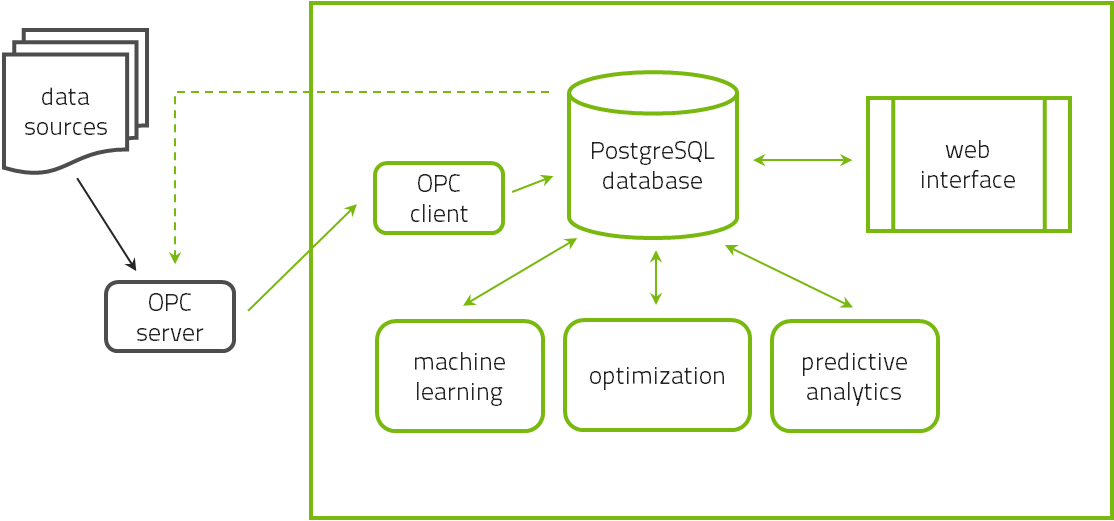Manual: 2.7. Software Architecture
The software has three major components. The central database that stores all data and model information is a PostgreSQL database. The data is analyzed by a command-line executable that reads data from the database and writes its results back to the database. The user interacts with this system via a browser-based graphical user interface written in Ruby-on-Rails.

All three components are typically installed on a single computer-server on the premises of the users’ institution. All users can access the interface via any web-browser on any device connected to the intranet of the institution provided that the appropriate firewalls allow this access. As the software is installed on the premises, this is not a cloud service and the data remains on site. There is thus no security threat either by loss of proprietary data or hacking attacks.
The three components may be installed on different servers if the user desires to optimize the database server for disc space and the computational server for computation speed but this is not necessary.
Initially, the historical data is expected to be provided in the form of a file. The reason is that a data export followed by a data import has been found to be far more efficient rather than a direct data connection via e.g. OPC-HDA.
The regular reading of real-time data is done via OPC-DA. For this purpose, the name of the OPC server must be specified (an example is opcda:///Softing.OPCToolboxDemo_ServerDA.1/{2E565242-B238-11D3-842D-0008C779D775}) and any intermediate firewalls must be appropriately opened. Also, the full item name of each tag in the OPC server must be specified to be able to read the data.